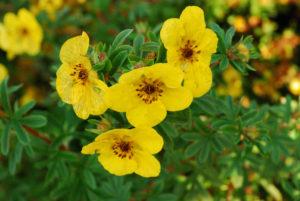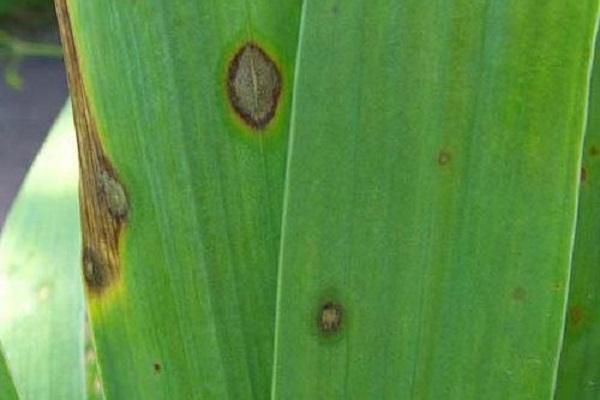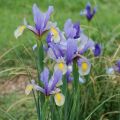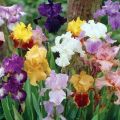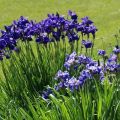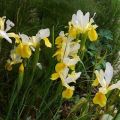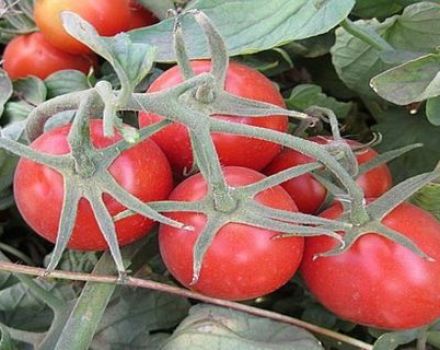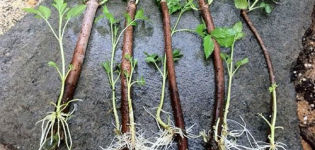Description of varieties of irises, planting, cultivation, care in the open field
In spring, irises bloom in the gardens. Their planting and leaving does not take a lot of time from summer residents. Gardeners try to choose frost-resistant varieties with different flowering times. In the middle lane, Siberian, Germanic, Japanese, and marsh iris are grown.
Description and characteristics of the flower
Iris in Greek is a rainbow. The name reflects the variety of flower colors. The root system develops in the upper soil layer. It is of 2 types:
- bulbous;
- rhizome.
Erect light green leaves of irises have a flat, xiphoid shape, located around the peduncle.
In the middle lane, irises bloom in late spring. Flowering ends in July. Outwardly, the flower resembles an orchid. Distinguish:
- fouls - outer lobes (3 pcs.) of the perianth, they are located in the lower tier and are turned downward;
- standards - inner lobes (3 pcs.) of the perianth, located in the upper tier, they resemble a dome, curved upward.
The color of the outer and inner petals is different. Flowers are often solitary, in some species they are collected in inflorescences. They live 1-5 days. The fruit is a long, ribbed capsule. One contains 25-45 seeds. They are large and brown.
Popular varieties of irises
According to the structure of the flower, all rhizome varieties of irises are divided into 2 groups: beardless, bearded. Varieties are classified according to the color of the petals, they are distinguished:
- two-color;
- one-color;
- variegata - the bottom is red-brown, the top is yellow;
- bordered - the edge of the petals (border) is painted in a contrasting color.
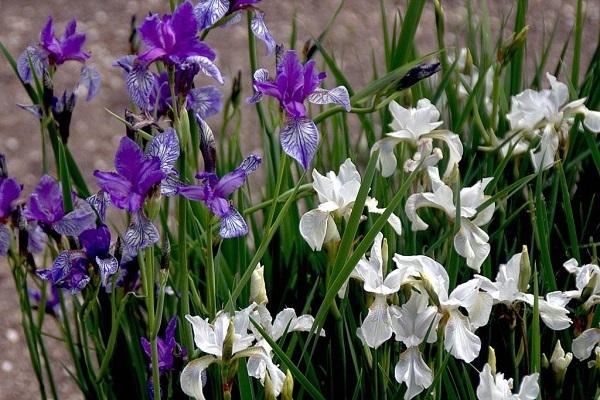
Bearded irises
To make your garden irresistible, you need to decorate it with bearded irises. Their flower consists of 6 petals and a "beard" - a shaggy strip formed by short hairs. There is a “beard” at the base of fouls.
| Variety | Height (cm) |
| Dwarf | 21-40 |
| Medium height | 41-70 |
| Tall | Above 70 |
Pros of bearded irises:
- abundant, long flowering;
- disease resistance;
- many varieties winter well without shelter.
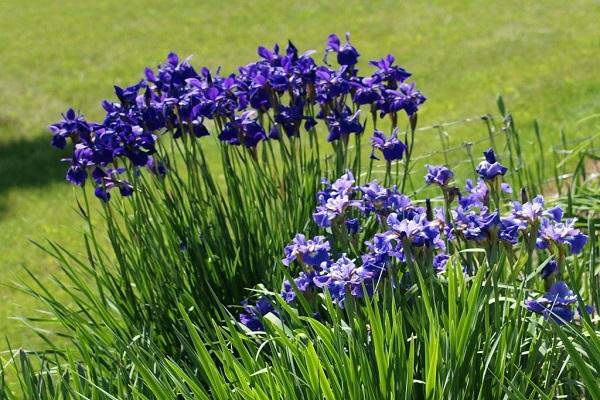
The tall (up to 1 m) American two-color hybrid Supreme Sultan is popular among summer residents. Ocher color standards, beard bright yellow, fouls painted in dark cherry color. The petals are corrugated along the edge. The Supreme Sultan blooms in May, June.
Winter-hardy, showy, tall Dutch hybrid Sultan Palace amazes with the beauty of large (15 cm diameter) reddish-brown flowers. The structure of the petals is dense, velvety, the edge is corrugated, the beard color is yellow.
Other, no less spectacular varieties of bearded iris:
- Super Hirow;
- Toronto;
- Immortality;
- Champagne Waltz.
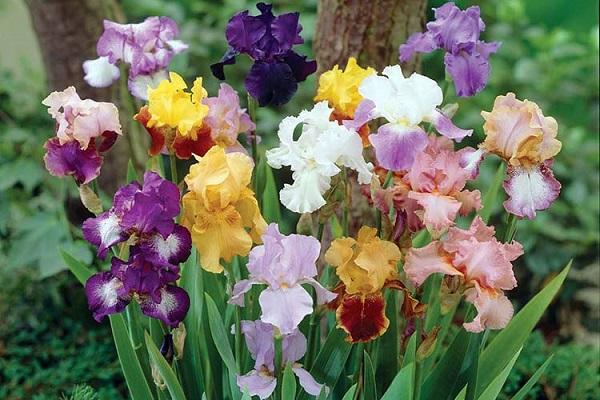
German iris
A variety of bearded irises with a well-developed creeping rhizome. The iris bush of Germanicus forms gray-green flat leaves, pointed upwards. Plant height from 0.6 to 1.2 m. On the peduncles there are single dark purple flowers, yellow at the base.
This variety blooms in May, June. The roots of German iris are dried, used as a spicy seasoning, decoctions are prepared for the treatment of throat and gall bladder.
Non-bearded irises
This group of irises lacks hairs ("beard") on the fouls - the outer perianth lobes. The non-bearded varieties include frost-resistant Siberian, Japanese, spuria and heat-loving Louisiana and Californian irises.
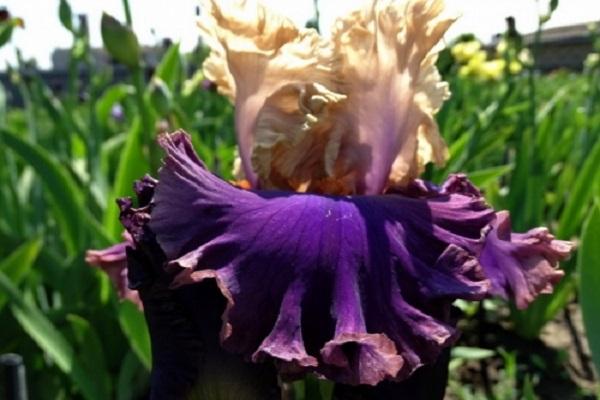
Siberian iris
The color of the flowers is blue-violet, the diameter is from 4 to 7 cm. The height of the plant is 0.7-1 m. Siberian iris winters well, it can be grown from the 3rd to the 9th zone of frost resistance. Leaves 0.5-0.8 m high, linear, narrow (4 cm), light green, retain their decorative effect until frost.
One Siberian iris bush can produce up to 40 peduncles (straight, branching). Flowering lasts 2-4 weeks and begins in June. This variety loves moisture, grows well near water bodies. Popular varieties:
- Hohenflug;
- White Swirl;
- Hohe Warte.
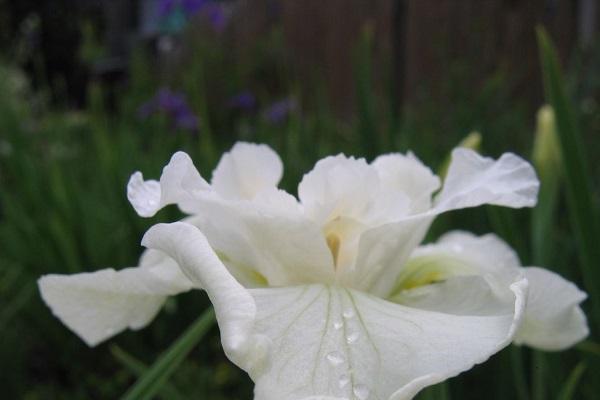
Japanese iris
This species grows in Japan and in the Far East. Plants are thermophilic. It is difficult to grow them in the middle lane. According to the size of flowers, varieties of Japanese irises are divided into groups:
- large, up to 25 cm in cross section;
- small, up to 14 cm;
- medium, about 17 cm.
The height of the bushes is 0.6-1 m.The varieties are popular among flower growers:
- Mizutamaboshi;
- Mikawa Itsuhashi;
- Kamionomukashi.
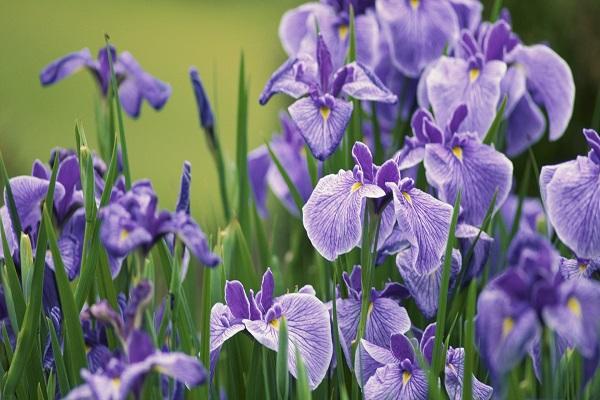
Iris spuria
This variety is rare for Russian gardens. Iris spuria flowers differ in shape from other species. The shape of the inner lobes is elongated, lingual, they are widely spread. There is a round plate on the lower lobes.
Iris spuria blooms 3 weeks later and lasts longer than in bearded forms. Flowers do not fade for 7 days. The leaves are bright green, pointed, decorative. Varieties for temperate climates:
- Archie Owen;
- Zamboanga;
- Lankaran;
- An innovator.

Iris marsh
It is called yellow iris. It is a moisture-loving, perennial plant with a creeping, fibrous rhizome. The flowering period falls on the last days of June, early July. In nature, marsh iris grows along the banks of reservoirs.
Varieties are grown in the gardens:
- Flore Pleno;
- Golden Queen;
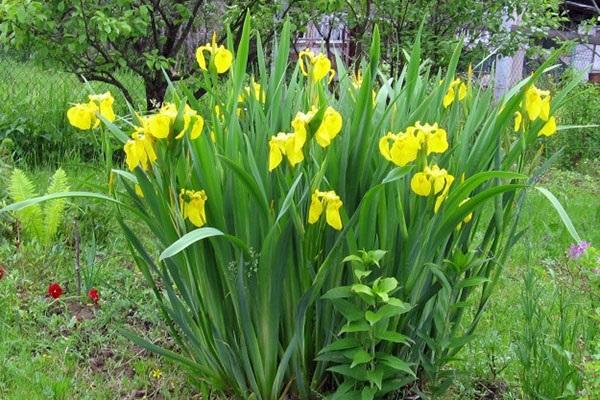
Reproduction of irises
Iris is propagated by seeds, by dividing the rhizome. Experienced gardeners prefer the vegetative method. An annual link is used as a planting material. It is a piece of rhizome and a fan of 7 leaves.
How to plant irises in the open field?
The soil is prepared a month before planting. The site is cleared of weeds, 1 m² of soil is applied:
- 1 bucket of sand;
- 2 tbsp. ash;
- 1 bucket of humus;
- 0.5 tbsp. superphosphate.
Before planting, the soil must be watered once a week.

Preparation of planting material
Purchased planting material must be disinfected in a strong manganese solution and dried in the sun. Before planting, you need to hold your delenki for 8 hours in the light. The sun's rays kill pathogenic bacteria and dry old roots. All sections must be powdered with crushed coal. Shorten the roots by 10 cm, the leaves - up to 10-15 cm.
When is it better to plant irises: in autumn or spring?
Planting times vary by region. In the south, bulbous varieties are planted in October, in temperate climates in September.For irises, the optimal time for planting is late August, early to mid September.
Late autumn planting is undesirable. The plant does not have time to take root, in the spring, due to thawing and freezing of the soil, its roots begin to protrude from the ground. For better rooting, the soil is watered with sodium humate (0.01% solution).

Where is the best place to plant?
The soil must be prepared in advance so that it has time to settle. After shallow digging, at least 2 weeks should pass. On fertile soil, the plant fattens, builds up a lot of green mass to the detriment of flowering.
When asked where it is better to plant irises, in the shade or in the sun, all experienced growers give an unambiguous answer - in the sun. With a lack of light, perennials first stop blooming, and eventually stop growing. Light partial shade in the afternoon is allowed.
How deep?
You do not need to plant deeply, you can not wait for flowering. Small, too, can not. The rhizome will freeze in winter. It is necessary to plant the cut to a depth of 3 cm. To do this, you need to dig a hole (10 cm), pour a small mound in the center. Plant a little delle on it, straighten the roots, sprinkle with soil, compact and water.
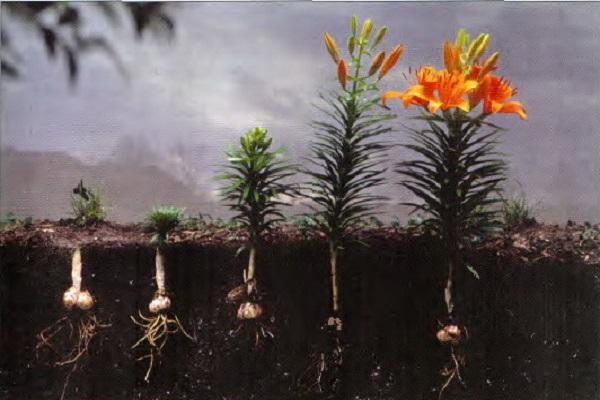
How far to plant?
At the dacha, irises can be planted in rows, keeping a distance of 0.5 m between them. It is recommended to adhere to the "head-tail" scheme. The head is called the part of the delenka with a fan of leaves, the tail is the area that was attached to the old rhizome.
Correct fit eliminates interlacing of rhizomes. When planting irises in a circle, the "tails" look at the center of the flower bed. For tall varieties, the holes are placed in increments of 40 cm, for undersized varieties - 20 cm.
How to care for irises?
Proper care allows you to grow a flowering perennial. In August, it is important to feed the plant, as flower buds form at this time. In September, leaving is minimal. In irises, leaves begin to turn yellow and die off. It is better not to disturb the perennial this month.
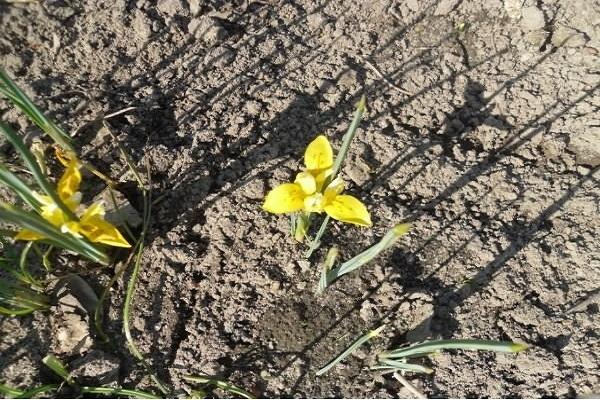
Temperature regime
Perennial irises often freeze slightly due to the fact that the roots are almost on the surface of the earth. To avoid this, the soil is mulched in late autumn. In regions with little snowy winters, iris bushes are covered. In the spring, the mulch and covering material are removed so that the roots do not rot.
Watering plants
Watering infrequently. Waterlogging causes wet bacterial rot, it leads to the death of shoots. The need for moisture increases during flowering. In the heat, young plants are watered every 3-4 days.

Top dressing and fertilization
During the season, you need to carry out at least 3 dressings, the first in April. At the beginning of the growing season, a perennial needs nitrogen; urea should be scattered around the perimeter of the bush. Some varieties bloom in May.
When buds appear, the bushes should be fed with phosphorus-potassium fertilizers. Mass flowering continues in June. It is worth once again feeding with fertilizers containing potassium and phosphorus. The third similar feeding should be carried out in August, when there is an active growth of green mass and the laying of flower buds.
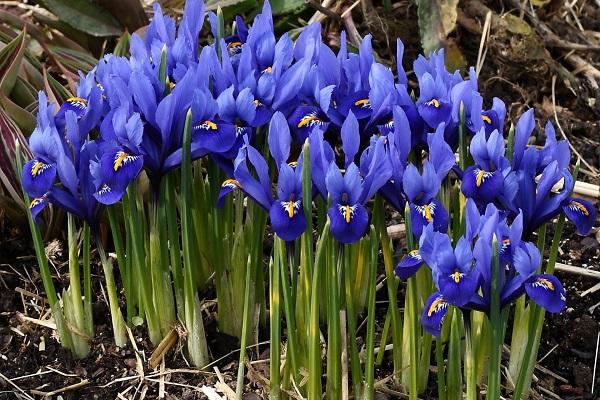
Pruning
Iris bloom actively in June. Withered flowers need to be cut off, cut out already faded peduncles. Do not allow annual bushes to bloom. Cut out all flower stalks. This will speed up the development of the bush. The last pruning should be done in October in preparation for winter.
Transfer
Perennial rhizome is creeping, bushes grow over the years. With a lack of space, they stick out of the ground. Irises, if not transplanted, degenerate and stop blooming. In a temperate climate, transplanting is carried out in the fall: in September-October. It is at this time that the rooting of irises occurs faster.
In the south, the bush is divided and planted in the spring. The works are carried out from April 10-15 to May. The weather plays a decisive role. The soil should warm up.
Iris transplant rules:
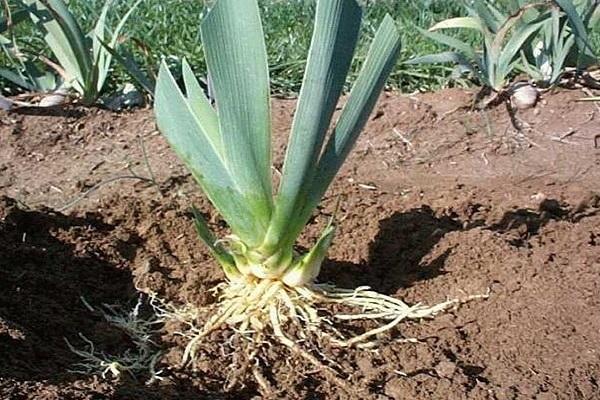
- water the bush well, dig it up with a shovel, remove it from the ground;
- rinse, divide into parts, each should have 1-2 annual links;
- cut out all old roots;
- remove dried leaves;
- shorten green leaves to a length of 10 cm;
- plant the cuttings in the prepared soil, water.
Shelter of irises for the winter
Bearded iris varieties need to be sheltered for the winter. Their frost resistance may not be enough, the bushes may freeze over the winter. In early November, the leaves are cut in the form of a fan at a height of 10 cm from the ground.
After the onset of frost, the soil is mulched with humus or peat. A layer of 10 cm is poured around the iris bushes. The mulch should cover the rhizome. When the threat of thaws has passed, the flowerbed with irises must be thrown with fir branches or covered with covering material, pinned to the ground.
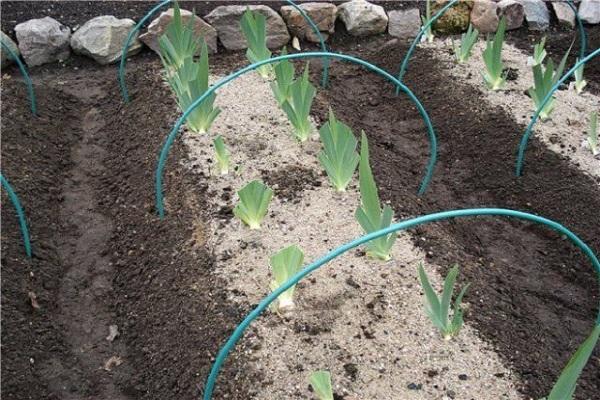
Disease and pest control
A perennial is susceptible to fungal infection. Diseased plants are identified by external signs.
| Iris disease | Signs | Iris treatment |
| Rust | Leaves turn brown, dry, curl | Treat once every 14 days with sulfur solution |
| Gray rot | A gray bloom appears on the leaves, stems | Stop watering, destroy the affected parts of the plant |
| Fusarium | The root suffers, the plant withers due to lack of nutrition | Destroy the diseased plant, treat the ground and neighboring flowers with a fungicide solution |
| Mosaic | Stripes and brown spots appear on the surface of the leaves | There are no drugs against the disease, the plant is removed |
| Heterosporia | At the initial stage, white, gray spots, with the further development of the disease, the leaves die off, the perennial dies | Removal of affected leaves, treatment of the bush with copper-containing preparations |
| Alternaria | Black bloom along the perimeter of leaf plates, leaf death | The disease is viral, it is not treated, the infected bushes are destroyed, the soil is watered with Bordeaux mixture |
| Ascochitosis | Brown spots, dried leaves | Treatment with preparations containing copper |
The nuances of growing in different regions of Russia
In the middle lane, it is recommended to mulch the soil after the temperature drops to 0 ° C. In the Moscow region, cover transplanted bushes and varieties with low winter hardiness only after the onset of frost.
In the Urals, in Siberia, all varieties of irises must be mulched and covered for the winter. Pay special attention to young perennials and perennials transplanted in autumn. The bushes are covered with spruce branches and wooden boxes, and in winter they are covered with snow.

Decorative qualities
On a plot in the garden, bearded irises are grown for cutting. They look good in group and single plantings. They are planted along garden paths, mixborders. The rocky slopes are decorated with irises.
Swamp iris varieties are planted along the banks of artificial and natural reservoirs. Dwarf varieties are planted in rabatki, mixborders, in the foreground of alpine slides. Miniature plants are grown in containers. Frost-resistant varieties are chosen for the garden.

